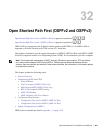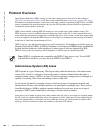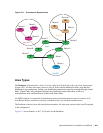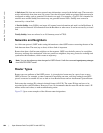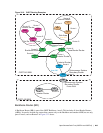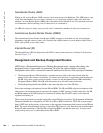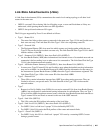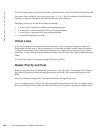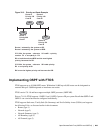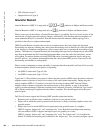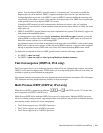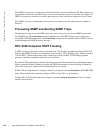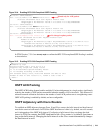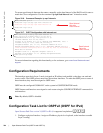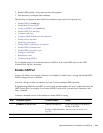698 | Open Shortest Path First (OSPFv2 and OSPFv3)
www.dell.com | support.dell.com
For all LSA types, there are 20-byte LSA headers. One of the fields of the LSA header is the Link-State ID.
Each router link is defined as one of four types: type 1, 2, 3, or 4. The LSA includes a link ID field that
identifies, by the network number and mask, the object this link connects to.
Depending on the type, the link ID has different meanings.
• 1: point-to-point connection to another router neighboring router
• 2: connection to a transit network IP address of Designated Router
• 3: connection to a stub network IP network/subnet number
• 4: virtual link neighboring router ID
Virtual Links
In the case in which an area cannot be directly connected to Area 0, you must configure a virtual link
between that area and Area 0. The two endpoints of a virtual link are ABRs, and the virtual link must be
configured in both routers. The common non-backbone area to which the two routers belong is called a
transit area. A virtual link specifies the transit area and the router ID of the other virtual endpoint (the other
ABR).
A Virtual Link cannot be configured through a Stub Area or NSSA.
Router Priority and Cost
Router priority and cost is the method the system uses to “rate” the routers. For example, if not assigned,
the system will select the router with the highest priority as the DR. The second highest priority is the
BDR.
Priority is a numbered rating 0-255. The higher the number, the higher the priority.
Cost is a numbered rating 1-65535. The higher the number, the greater the cost. The cost assigned reflects
the cost should the router fail. When a router fails and the cost is assessed, a new priority number results.




